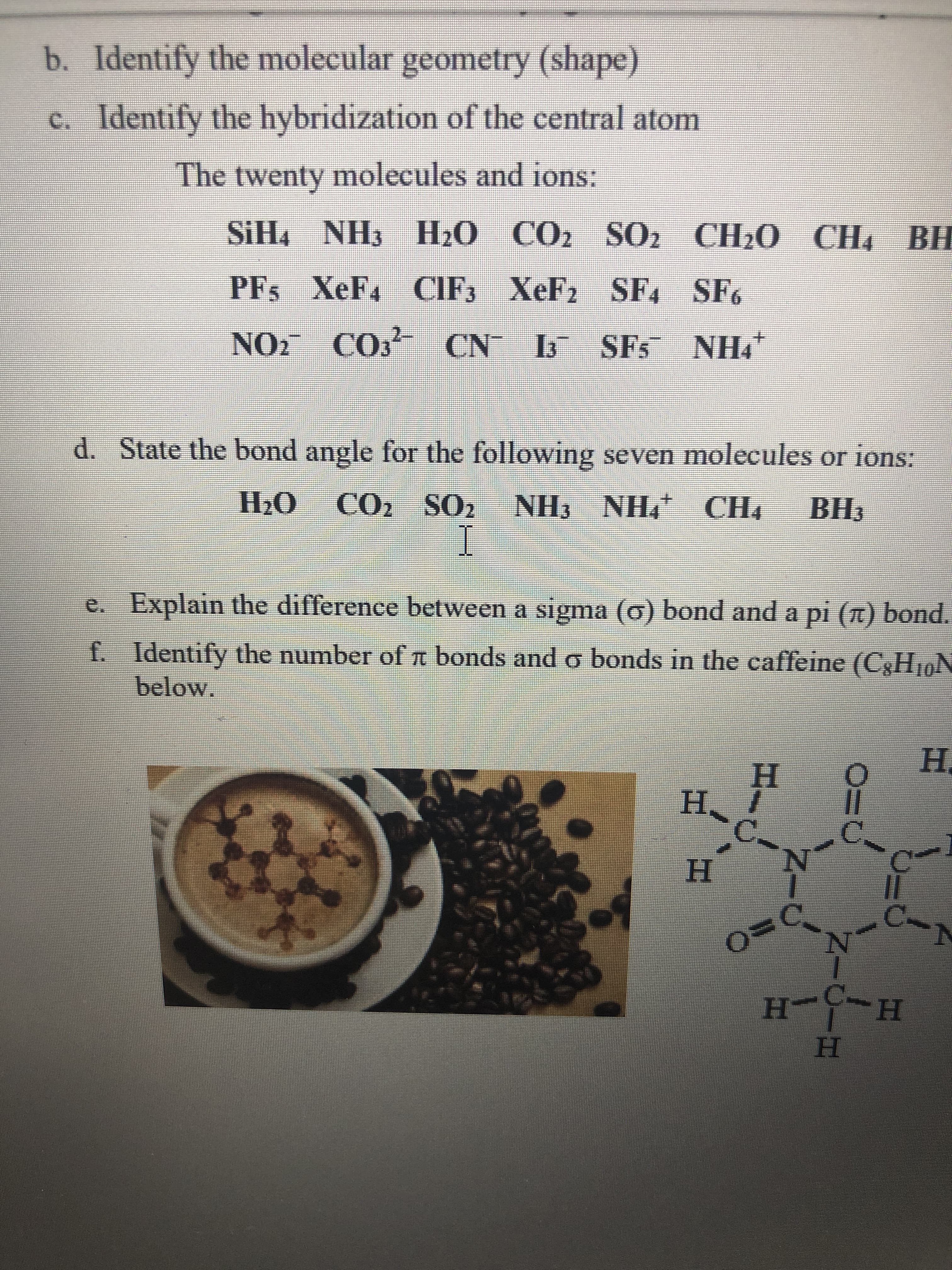b. Identify the molecular geometry (shape) c. Identify the hybridization of the central atom The twenty molecules and ions: SIH4 NH3 H20 CO2 SO2 CH20 CH, BH PFs XEF4 CIF, XeF2 SF, SF6 NO2 CO3 CN I SF5 d. State the bond angle for the following seven molecules or ions: НаО CO2 SO2 NH3 NH, CH4 ВН3 e. Explain the difference between a sigma (o) bond and a pi (n) bond. f. Identify the number of n bonds and o bonds in the caffeine (C,H10N below. H, H. H. H. H-C-H
Formal Charges
Formal charges have an important role in organic chemistry since this concept helps us to know whether an atom in a molecule is neutral/bears a positive or negative charge. Even if some molecules are neutral, the atoms within that molecule need not be neutral atoms.
Polarity Of Water
In simple chemical terms, polarity refers to the separation of charges in a chemical species leading into formation of two polar ends which are positively charged end and negatively charged end. Polarity in any molecule occurs due to the differences in the electronegativities of the bonded atoms. Water, as we all know has two hydrogen atoms bonded to an oxygen atom. As oxygen is more electronegative than hydrogen thus, there exists polarity in the bonds which is why water is known as a polar solvent.
Valence Bond Theory Vbt
Valence bond theory (VBT) in simple terms explains how individual atomic orbitals with an unpaired electron each, come close to each other and overlap to form a molecular orbital giving a covalent bond. It gives a quantum mechanical approach to the formation of covalent bonds with the help of wavefunctions using attractive and repulsive energies when two atoms are brought from infinity to their internuclear distance.
provid Lewis structure, molecular geometry and hybridization for. CH4. BH3. PF5. XeF2. SF6. NO^- 2. CO^2- 3. CN^- . I^- 3. SF^- 5. NH^+ 4.

Trending now
This is a popular solution!
Step by step
Solved in 3 steps with 2 images









